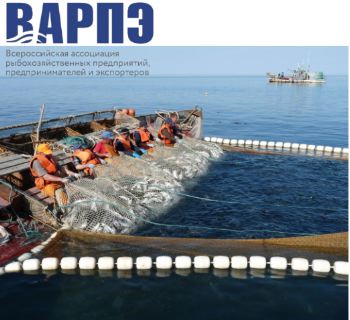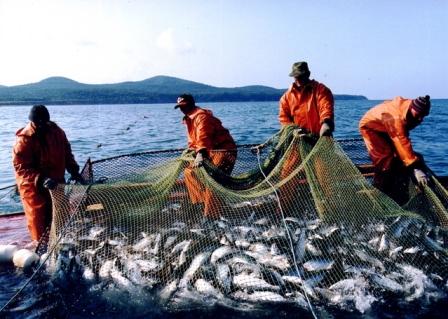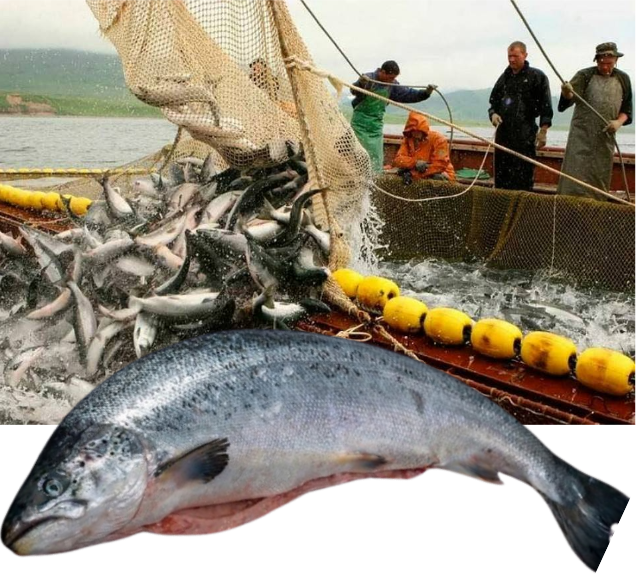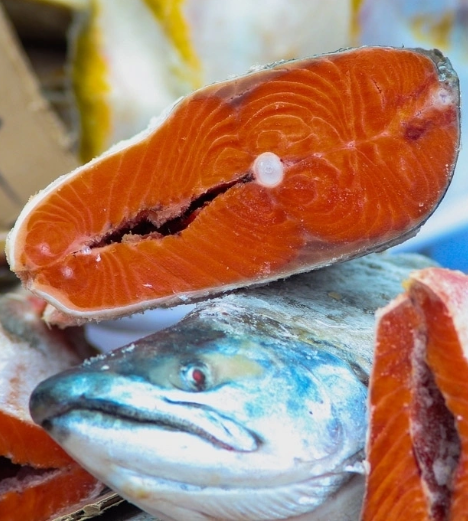|

VARPE predicts it will take time for the industry and consumers to adapt to the evolving market dynamics.
VARPE Anticipates Price Shifts Amid One of the Worst Salmon Harvests on Record
 (RUSSIAN FEDERATION, 11/26/2024)
(RUSSIAN FEDERATION, 11/26/2024)
The 2024 salmon fishing season, following a record-breaking year in 2023, has concluded with its lowest yield since 2005. This decline marks the start of what experts predict will be a prolonged downturn in catch volumes, with no significant recoveries expected for the next 5 to 7 years. The reduced supply is poised to reshape the pricing dynamics of the salmon market, as outlined by the All-Russia Association of Fishing Industry, Businessmen and Exporters (VARPE).

Declining Catches Across Salmon Species
According to the Russian Federal Research Institute of Fisheries and Oceanography (VNIRO), as of November 24, the total Pacific salmon catch stood at 235,434 metric tons, a 14.6% drop from 2023 levels. The breakdown shows significant declines in most species:
- Pink salmon: 136,217 metric tons (-7.5%)
- Chum salmon: 54,269 metric tons (-29.3%)
- Sockeye salmon: 8,278 metric tons (-38.1%)
- Chinook salmon: 322 metric tons (-33.1%)
- Masu salmon: 41 metric tons (+41.3%)
With less than a week remaining in the official season, VARPE notes that active fishing has ended, making it clear that this year’s results are the lowest in nearly two decades.

A Historic Perspective on Salmon Catches
The peak year for salmon fishing in Russia was 2018, with a record catch of 676,000 metric tons. The 2023 season followed closely with 609,000 metric tons—the second-highest ever recorded. In contrast, the 2022 catch was significantly lower at 272,000 metric tons. For 2024, authorities set a total allowable catch of 320,000 metric tons in the Far Eastern basin, but the season’s results have fallen far short.
Over the last two decades, annual salmon catches have consistently exceeded historical averages. From 2005 to 2024, the average annual catch reached 400,200 metric tons—more than double the 100-year average of 194,000 metric tons. However, these highs are unlikely to return soon. "According to scientific forecasts, record catches are not expected for at least the next 5–7 years," VARPE stated.
 Impact on Pricing and Industry Costs Impact on Pricing and Industry Costs
The sharp reduction in supply is beginning to influence pricing within the sector. Pink salmon, historically the most abundant and affordable Pacific salmon species, accounted for over 60% of recent catches and has also driven pricing trends for its caviar. Wholesale prices for pink salmon, chum salmon, and sockeye salmon caviar currently range between 7,000 and 8,000 rubles per kilogram, according to VARPE.
Adding to the challenge, salmon enterprises are grappling with escalating costs. VARPE reports that bank loan servicing expenses have more than doubled compared to last year, and production costs across the value chain have increased by more than 1.5 times over the past five years.
A Shifting Market Landscape
VARPE predicts it will take time for the industry and consumers to adapt to the evolving market dynamics. “The high catches of the past 20 years created a price environment that is now undergoing a significant shift,” the association concludes. With supply constrained and costs rising, the salmon sector faces a challenging adjustment period.
[email protected]
www.seafood.media
Information of the company:
|
Address:
|
Christmas avenue, 9
|
|
City:
|
Moscow
|
|
State/ZIP:
|
(103045)
|
|
Country:
|
Russian Federation
|
|
Phone:
|
+7 495 252-10-45
|
|
E-Mail:
|
[email protected]
|
More about: 
|
|
|
|



